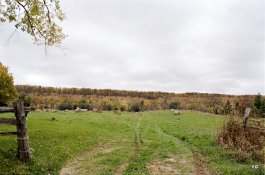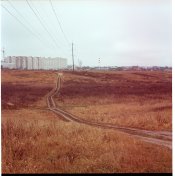Irji
Member
Hello all!
I dont understand what is going on with my development. I read the forum but havent found answer for my questions. The problem is streaking, stain and uneven color. It looks like yellow, brown and magenta stains and streaks on positive.
I use Tetenal kit with Blix. I have been having this problem for more than a year. For one period I used to develop at 86F / 30C, but color crossover was so heavy and unpleasant, and all my negatives suffered from lack of color variability, so I went back to 100F / 38.5C development. And I should mention that development at low temperature didnt cure negatives from streaking, but made it less visible.
On positive streaks look like magenta stains with yellow border. Sometimes just yellow stains. They are darker than whole image. Also I can see very faint streaks on base mask. These streaks on the negative look yellowish and greenish and they are on the base too, not only on images.
My process in details:
I use Tetenal kit splitted on 500ml batches. One batch for 4 development cycles / 2 films per cycle in fully filled 1520 tank.
I do presoak twice at 100F / 38.5C for 30-45 seconds. I use 1520 tank on jobo cpe2 without lift. I pour in 500 ml of developer as fast as I can through the preheated funnel. 500 ml fully covers the reels, so I dont think I have uneven wetting of film with developer. I invert tank 4 or 5 times fast as Kodak suggest for BW development and very fast put the tank on the running machine.
I have replaced motor on my Jobo unit and now speed #2 is equal to 80-83rpm. Tank is perfectly leveled.
At 305 I take the tank and pour the developer out and pour in the stop bath through the funnel. I invert by hand approximately for 1 minute (Or sometimes put the tank on the machine for 1 minute result is the same). I use 2% acetic acid stop bath.
After stop bath I take the tank to the bathroom and wash film for 3 with jobo bubble washer at 100F / 38.5 C
So, next the Blix for 10-12 minutes (I do it longer than Tetenal recommends 6 minutes). Wash and Stab.
I did some tests:
1) I added 5 g/l Sodium Metabisulfite to Stop Bath and wash before Blix no difference.
2) I omitted Stop Bath between Developer and Blix I got the worst result with yellow and magenta streaks everywhere and dense film base.
3) I omitted wash between Stop and Blix I got better result with just few magenta streaks on 2 frames.
4) I developed with presoak and without presoak no difference.
I think my problem have nothing with uneven development or uneven wetting with developer. I suppose something is wrong with stop bath, wash or blix.
Longer wash after stop bath more defects and denser film base. Shorter wash less defects but there are some.
I tried Buffered stop bath (1 mole of Sodium Acetate + Acetic Acid to pH of 4 in 1 liter of water + 20 g Sodium Bisulfite) without wash straight to the Blix. It becomes better but still there are few very light marks and streaks and Fix in my Blix quickly started to decompose.
pH of my wash water is 7 to 7.5 depending on season
pH of fresh Tetenal Blix from 6.7 to 7.2 (from kit to kit)
pH of my stop bath ~ 2.7-3
Is it possible, that these defects are caused by developer carryover or something else?
PS. Sorry for my English =)
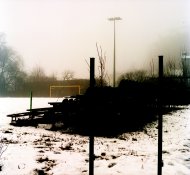

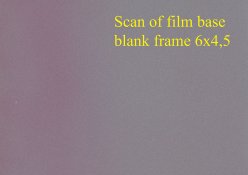
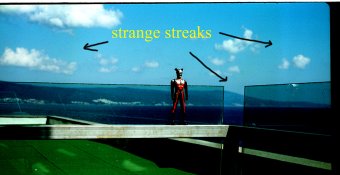
I dont understand what is going on with my development. I read the forum but havent found answer for my questions. The problem is streaking, stain and uneven color. It looks like yellow, brown and magenta stains and streaks on positive.
I use Tetenal kit with Blix. I have been having this problem for more than a year. For one period I used to develop at 86F / 30C, but color crossover was so heavy and unpleasant, and all my negatives suffered from lack of color variability, so I went back to 100F / 38.5C development. And I should mention that development at low temperature didnt cure negatives from streaking, but made it less visible.
On positive streaks look like magenta stains with yellow border. Sometimes just yellow stains. They are darker than whole image. Also I can see very faint streaks on base mask. These streaks on the negative look yellowish and greenish and they are on the base too, not only on images.
My process in details:
I use Tetenal kit splitted on 500ml batches. One batch for 4 development cycles / 2 films per cycle in fully filled 1520 tank.
I do presoak twice at 100F / 38.5C for 30-45 seconds. I use 1520 tank on jobo cpe2 without lift. I pour in 500 ml of developer as fast as I can through the preheated funnel. 500 ml fully covers the reels, so I dont think I have uneven wetting of film with developer. I invert tank 4 or 5 times fast as Kodak suggest for BW development and very fast put the tank on the running machine.
I have replaced motor on my Jobo unit and now speed #2 is equal to 80-83rpm. Tank is perfectly leveled.
At 305 I take the tank and pour the developer out and pour in the stop bath through the funnel. I invert by hand approximately for 1 minute (Or sometimes put the tank on the machine for 1 minute result is the same). I use 2% acetic acid stop bath.
After stop bath I take the tank to the bathroom and wash film for 3 with jobo bubble washer at 100F / 38.5 C
So, next the Blix for 10-12 minutes (I do it longer than Tetenal recommends 6 minutes). Wash and Stab.
I did some tests:
1) I added 5 g/l Sodium Metabisulfite to Stop Bath and wash before Blix no difference.
2) I omitted Stop Bath between Developer and Blix I got the worst result with yellow and magenta streaks everywhere and dense film base.
3) I omitted wash between Stop and Blix I got better result with just few magenta streaks on 2 frames.
4) I developed with presoak and without presoak no difference.
I think my problem have nothing with uneven development or uneven wetting with developer. I suppose something is wrong with stop bath, wash or blix.
Longer wash after stop bath more defects and denser film base. Shorter wash less defects but there are some.
I tried Buffered stop bath (1 mole of Sodium Acetate + Acetic Acid to pH of 4 in 1 liter of water + 20 g Sodium Bisulfite) without wash straight to the Blix. It becomes better but still there are few very light marks and streaks and Fix in my Blix quickly started to decompose.
pH of my wash water is 7 to 7.5 depending on season
pH of fresh Tetenal Blix from 6.7 to 7.2 (from kit to kit)
pH of my stop bath ~ 2.7-3
Is it possible, that these defects are caused by developer carryover or something else?
PS. Sorry for my English =)












